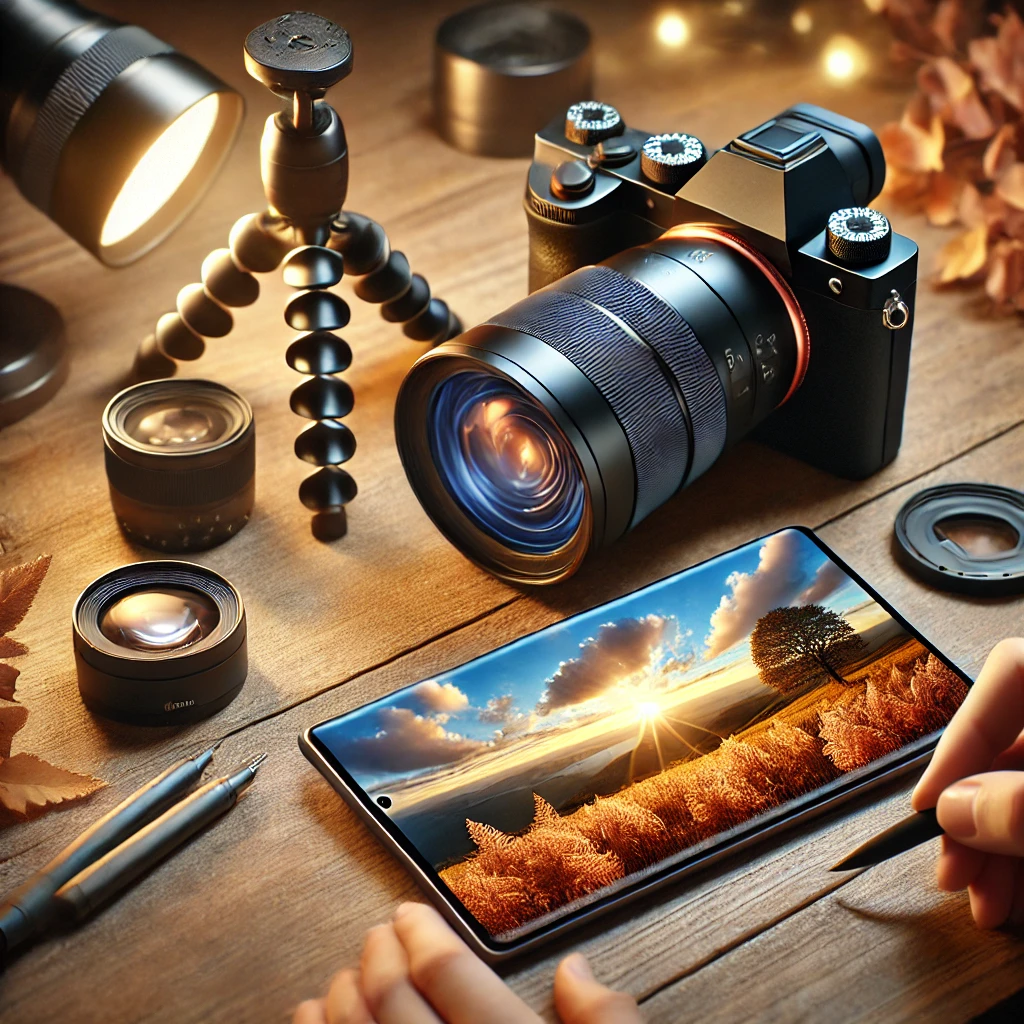
Introduction
Smartphones have become powerful tools for photography, enabling anyone to capture high-quality images effortlessly. This article introduces five essential techniques to help you take stunning photos with your smartphone, turning everyday snapshots into professional-grade masterpieces.
1. Master Composition: Balancing Elements for Perfect Shots
Use the Rule of Thirds for Balanced Compositions
The rule of thirds divides your frame into nine equal parts using two horizontal and two vertical lines. Positioning your subject along these lines or at their intersections creates a balanced and visually appealing image. For example, placing the horizon along the upper third line in a landscape photo can emphasize either the sky or the foreground, creating a dynamic composition.
Guide the Viewer’s Eye with Leading Lines
Leading lines, such as roads, rivers, or fences, naturally draw the viewer’s eye toward the subject. For instance, capturing a photo of a path leading to a beautiful sunset creates a visually engaging image that directs attention to the horizon. Experiment with various lines to create depth and focus in your shots.
Create Depth with Foreground and Background Elements
Adding elements to the foreground and background enhances the depth of your photos. For instance, placing a tree in the foreground while capturing a mountain in the background adds layers and scale. Portrait mode on smartphones can also blur the background, highlighting the subject and enhancing the depth effect.
2. Harness Light: Natural and Artificial Lighting Techniques
Capture Photos During the Golden Hour
The golden hour, occurring shortly after sunrise or before sunset, provides soft, warm light ideal for photography. This light reduces harsh shadows and enhances the natural glow of your subject. For example, taking portraits during this time results in flattering, evenly lit photos with a golden hue.
Use Backlighting for Dramatic Effects
Positioning your subject between the camera and the light source creates backlighting, perfect for silhouettes or lens flares. For instance, photographing a person against a sunset can produce a striking silhouette, while adjusting exposure can highlight specific details.
Control Indoor Lighting for Better Shots
For indoor photography, position your subject near a window for diffused natural light, or use lamps to create a warm atmosphere. Reflective surfaces like white paper or mirrors can bounce light, reducing shadows. For example, a mirror can brighten a subject’s face and add creative reflections.
3. Utilize Smartphone Camera Settings
Enhance Photos with HDR Mode
High Dynamic Range (HDR) mode balances highlights and shadows, perfect for scenes with varying light conditions. For example, capturing a sunset cityscape with HDR preserves both the vibrant sky and the shadowed buildings, creating a balanced image.
Experiment with Manual Mode
Manual mode allows you to adjust settings like shutter speed and ISO for creative control. A slower shutter speed can capture motion blur in waterfalls, while a faster speed freezes action in sports. These adjustments add versatility to your photography.
Lock Focus and Exposure for Precision
Tapping on your smartphone screen locks focus and exposure, ensuring sharp images of your subject. For example, focusing on a flower’s petals creates a detailed foreground while blurring the background for an artistic effect.
4. Upgrade with Smartphone Accessories
Expand Possibilities with Clip-On Lenses
Clip-on lenses, such as wide-angle or macro lenses, expand your smartphone’s capabilities. For instance, a macro lens can capture intricate details of a butterfly’s wings, adding depth and uniqueness to your photography.
Stabilize Shots with a Tripod
A tripod stabilizes your smartphone, enabling long exposure shots and time-lapses. For example, photographing a starry night with a tripod ensures sharp, clear images. Lightweight and adjustable tripods offer flexibility for various angles.
Improve Lighting with a Ring Light
Ring lights provide even illumination, ideal for portraits and videos. They reduce shadows and enhance skin tones, making them perfect for vlogging or video calls. Adjustable color temperatures allow for tailored lighting effects.
5. Edit Photos for a Professional Finish
Enhance Images with Free Editing Apps
Apps like Snapseed and Lightroom offer tools to adjust brightness, contrast, and color balance. For instance, editing a sunset photo by increasing saturation can make the colors vibrant, while presets simplify the process for beginners.
Transform Moods with Color Grading
Color grading alters the atmosphere of a photo. Adding cool tones to a landscape conveys calmness, while warm tones create a cozy feel. Experimenting with color adjustments helps develop a unique style.
Refine Composition with Cropping
Cropping removes distractions and improves framing. For example, cropping a portrait to align the subject’s eyes with the top third of the frame enhances visual appeal. Most editing apps provide aspect ratio guides for precision.
Conclusion
Smartphone photography offers endless possibilities for creativity and self-expression. By mastering composition, lighting, settings, and editing, you can transform your photos into professional-quality images. Start experimenting with these techniques and discover the potential of your smartphone camera.



Comment